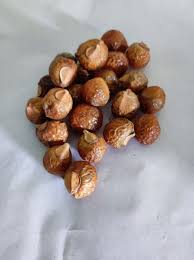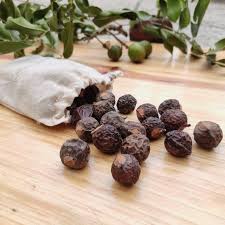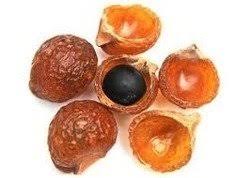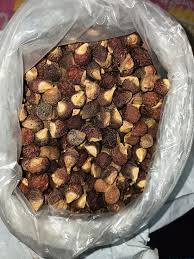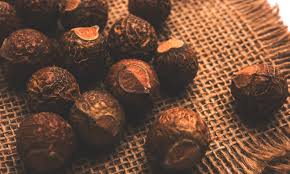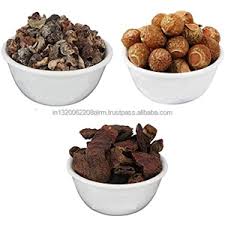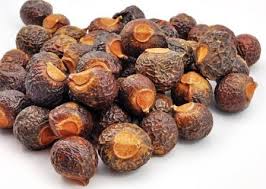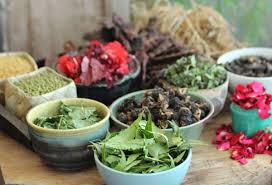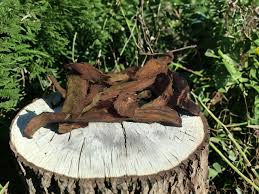How to Use Amla for Treating Acne Naturally
Acne is one of the most common skin concerns affecting people of all ages. While modern treatments often rely on chemical-based products, many are now turning to natural remedies for a gentler, long-lasting solution. Among these natural options, amla, also known as Indian gooseberry, stands out as a powerful ingredient rooted in Ayurveda. Rich in antioxidants, vitamin C, and anti-inflammatory compounds, amla has been traditionally used for promoting healthy, clear skin. In this article, we explore how to use amla effectively for treating acne naturally, along with its skin benefits, usage methods, and precautions.
Long Description
- Why Amla is Effective for Acne Treatment
Amla is a potent Ayurvedic fruit with multiple skin-enhancing properties that make it suitable for acne treatment:
Rich in Vitamin C: Amla contains 20 times more vitamin C than an orange. This powerful antioxidant helps reduce oxidative stress on the skin, which is one of the key causes of acne and inflammation.
Anti-inflammatory Properties: Amla reduces redness, swelling, and skin irritation associated with acne breakouts.
Detoxification: It aids in flushing out toxins from the liver and blood, which helps prevent acne from the inside out.
Regulates Oil Production: Amla helps balance the sebum (oil) levels on the skin, reducing clogged pores and breakouts.
Promotes Collagen Formation: Vitamin C in amla boosts collagen production, leading to faster healing of acne scars and blemishes.
- Internal Use of Amla for Acne
Consuming amla regularly can help address the root causes of acne from within. Here are some ways to include amla in your diet:
A. Amla Juice (Morning Detox)
Drinking fresh amla juice on an empty stomach helps detoxify the liver and improve digestion—two factors closely linked to acne. Mix 20–30 ml of amla juice with warm water and drink it daily for visible results.
B. Amla Powder with Honey
Mix 1 teaspoon of amla powder with 1 teaspoon of raw honey and consume it once a day. Honey acts as an anti-inflammatory and enhances amla’s benefits.
C. Amla in Smoothies or Herbal Teas
Blend amla powder into your morning smoothies or add it to herbal teas to boost your daily antioxidant intake.
D. Amla Capsules
For those who find the taste of amla unpleasant, high-quality amla capsules are a convenient alternative. Take them as per the recommended dosage on the packaging or as advised by a practitioner.
- External Use of Amla for Acne
Topical application of amla can directly reduce acne inflammation, fade dark spots, and improve overall skin tone.
A. Amla Face Pack for Acne-Prone Skin
Ingredients:
1 teaspoon amla powder
1 teaspoon multani mitti (Fuller’s earth)
Rose water to mix
Method:
Mix all ingredients into a paste. Apply to clean skin, leave it for 15–20 minutes, then rinse with lukewarm water. Use twice a week to reduce acne and control oiliness.
B. Amla and Turmeric Spot Treatment
Ingredients:
1 teaspoon amla powder
A pinch of turmeric
A few drops of water
Method:
Make a paste and apply it directly on pimples. Leave for 10–15 minutes and rinse off. Both ingredients have antibacterial properties that help reduce active acne.
C. Amla and Aloe Vera Gel Mask
Ingredients:
1 teaspoon fresh amla juice
2 teaspoons pure aloe vera gel
Method:
Mix and apply the mask on affected areas. Leave it for 20 minutes, then rinse. This mask soothes inflamed skin and promotes faster healing.
D. Amla Toner for Daily Use
Boil a few slices of fresh amla in water, let it cool, and store it in a spray bottle. Use as a natural toner after face cleansing to shrink pores and prevent bacterial buildup.
- Amla’s Role in Detox and Hormonal Balance
Acne is often the result of hormonal imbalance, poor digestion, or liver overload. Amla addresses these root causes:
Improves Liver Function: Amla stimulates liver detox, reducing internal heat (pitta), which often manifests as skin breakouts.
Balances Hormones: Its cooling and balancing effect in Ayurveda helps regulate hormonal fluctuations that trigger adult or cystic acne.
Enhances Gut Health: Amla improves digestion and helps eliminate constipation, ensuring the body expels waste efficiently, thereby clearing up the skin.
- Scientific Support for Amla in Skin Care
Several studies have highlighted amla’s potential in dermatological health:
A study published in the Journal of Clinical and Aesthetic Dermatology observed that natural ingredients like amla can significantly reduce acne lesions and improve skin texture.
Another clinical trial in Phytotherapy Research found that amla extract helped reduce skin inflammation, a key factor in acne.
Its antioxidant effects have been widely studied and confirmed for reducing oxidative skin damage, which contributes to acne formation.
These findings support the traditional use of amla in skin care and make it a valuable addition to any natural acne treatment plan.
- Tips for Maximum Results
To get the most benefit from amla in treating acne:
Be consistent with usage—natural remedies require regular application over time.
Combine both internal and external methods for holistic benefits.
Use high-quality, organic amla products to ensure effectiveness.
Perform a patch test before using any topical amla mask.
Maintain a healthy diet and lifestyle alongside amla use.
- Precautions and Side Effects
Though amla is generally safe, some precautions should be taken:
Overconsumption may cause mild acidity or loose stools in some individuals.
If you have low blood sugar or are on diabetic medications, consult a doctor before consuming high doses.
Avoid using amla topically on broken or highly sensitive skin without expert advice.
Always test any DIY mask on a small area of skin to check for irritation.
- Ideal Audience for Amla-Based Acne Treatment
Amla can be particularly beneficial for:
Teenagers facing hormonal acne
Adults experiencing stress-related or cystic acne
Individuals with oily, sensitive, or inflamed skin
Those looking for a natural, side-effect-free approach to clear skin
Anyone with recurring acne or blemishes looking for a long-term solution
- Amla in Ayurveda: Skin Health and Dosha Balance
In Ayurvedic tradition, amla is known to pacify Pitta dosha, which governs heat and inflammation in the body. Since acne is often linked with aggravated Pitta, amla’s cooling nature makes it ideal for treating this condition.
Additionally, amla is classified as a Rasayana, or rejuvenator, promoting overall vitality, improving tissue quality, and enhancing the body’s natural healing abilities. Its use in Ayurvedic formulations for skin care reflects its time-tested effectiveness in promoting healthy, blemish-free skin.
Conclusion
Amla is a powerful and versatile natural remedy that offers a safe and effective way to treat acne from both inside and out. Its rich vitamin C content, anti-inflammatory properties, and detoxifying effects work together to address the root causes of acne rather than just the symptoms.
Whether consumed daily in juice or powder form or applied as a face mask, amla has the potential to transform your skin naturally. However, like all natural treatments, it requires consistency, patience, and proper application.
For those seeking a holistic, Ayurvedic solution to acne that supports overall skin health, amla is truly worth incorporating into your skincare routine.


